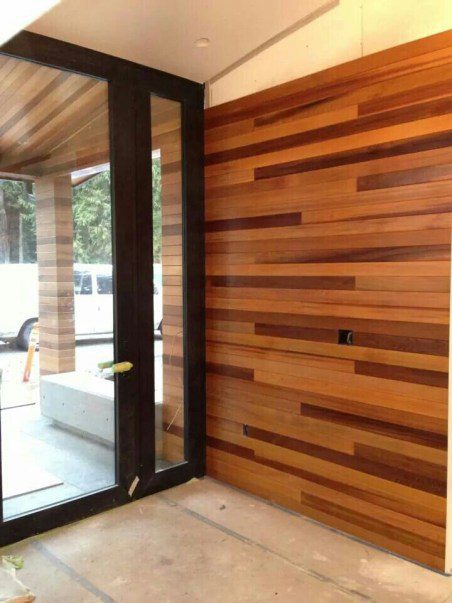Yes, cedar does shrink when it dries. This is a common concern for woodworkers and homeowners.
The extent of shrinkage depends on various factors. Cedar wood is popular for its beauty and durability. But, like all wood, it loses moisture over time. As it dries, cedar can shrink, warp, or crack. Understanding this process helps in choosing the right wood for your project.
Different types of cedar may shrink differently. Knowing how cedar behaves can save you from potential issues. In this blog, we will explore the details of cedar shrinkage. We will discuss why it happens and how to manage it. This knowledge will help you make informed decisions about using cedar in your projects.

Credit: www.ebay.com
Introduction To Cedar Wood
Cedar wood is known for its durability and pleasant aroma. It is a popular choice in many building projects. Cedar comes from trees in the genus Cedrus. These trees grow in different parts of the world. Cedar wood is often used because it is resistant to decay. This makes it perfect for outdoor use.
There are different types of cedar. Western Red Cedar is common in the USA. It has a rich color and a sweet smell. Eastern Red Cedar is also popular. It is strong and has a spicy scent. Northern White Cedar is light in color and weight. All types of cedar have their own unique properties.
Cedar wood is used in many ways. Furniture made from cedar is very durable. Cedar is also used in fencing and decking. This is because it can withstand bad weather. Many people use cedar to build closets and chests. The wood’s aroma keeps insects away. Cedar is also a top choice for saunas due to its water resistance.
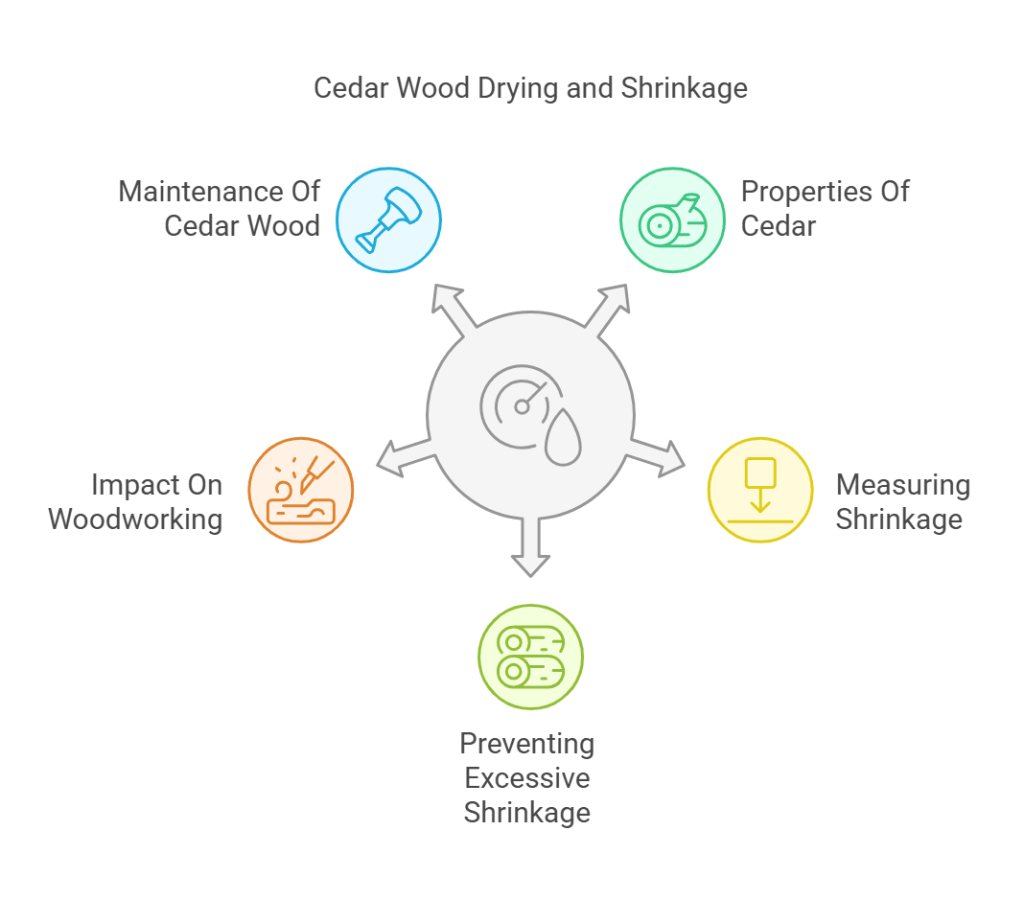
Properties Of Cedar
Cedar is known for its strength. It is highly resistant to decay. This makes it perfect for outdoor use. Many people use it for fences and decks. Termites do not like cedar. This keeps the wood safe from damage. It also has natural oils that protect it. These oils prevent rot and insects. Cedar can last for many years without treatment.
Cedar has a beautiful appearance. Its color ranges from light amber to deep brown. The wood has a fine, straight grain. This makes it look very elegant. Many people love the natural look of cedar. It also smells very nice. The scent is fresh and calming. Cedar can add a touch of nature to any space. Its beauty and smell make it a popular choice for homes.
Cedar Drying Process
Cedar wood can dry in the open air. This process is slow. It can take several months. Cedar is stacked in layers. Each layer is separated by small sticks. These sticks allow air to flow. Air flow helps the wood dry evenly. Cedar can shrink as it dries. This shrinkage is due to water loss. Cedar wood can shrink about 5-10%. Air drying is cost-effective. But it takes more time.
Kiln drying is faster. This method uses a special oven. The oven controls temperature and humidity. Cedar can dry in a few days. Kiln drying can also cause shrinkage. Shrinkage is similar to air drying. About 5-10%. Kiln drying makes cedar more stable. It reduces the risk of warping. Kiln drying is more expensive. But it saves time.
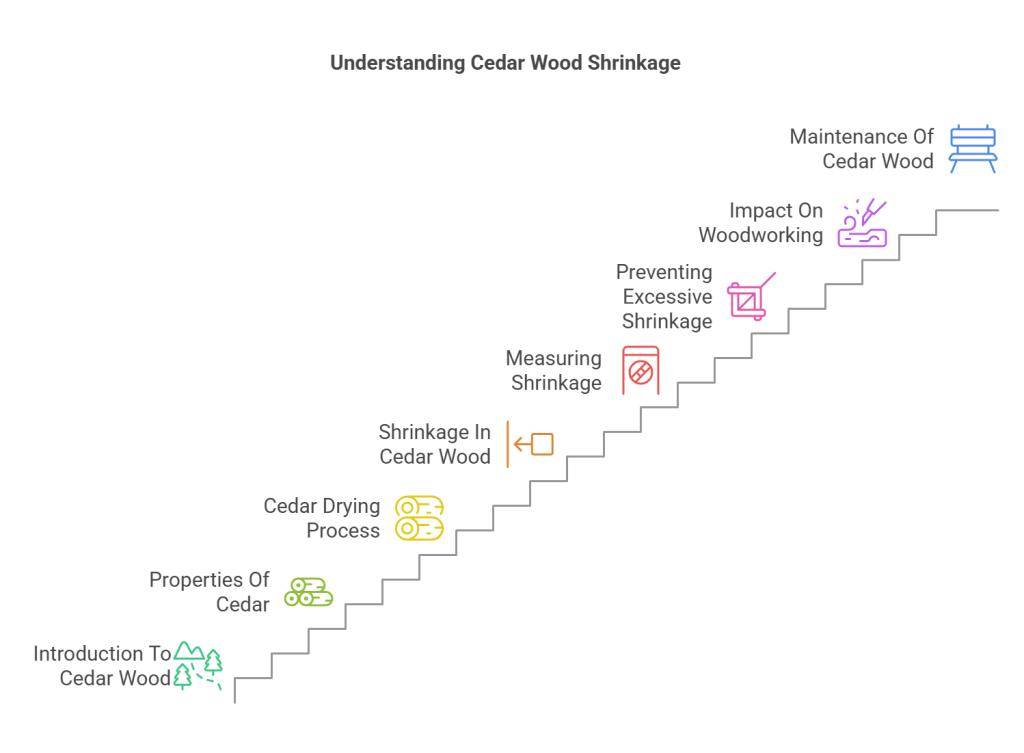
Shrinkage In Cedar Wood
Cedar wood does shrink when it dries. The extent of shrinkage depends on several factors. Moisture content is the most important factor. Wood with high moisture content shrinks more. Temperature also plays a role. Warmer temperatures can speed up drying and shrinkage. The grain pattern of the wood affects shrinkage too. Straight-grain wood shrinks less than wood with a wavy grain. Thickness of the wood is another factor. Thicker pieces tend to shrink less. Proper storage can help control shrinkage. Keeping wood in a stable environment reduces drastic changes. Understanding these factors can help manage cedar wood better.
| Wood Type | Shrinkage Rate |
|---|---|
| Cedar | Low to Moderate |
| Oak | High |
| Pine | Moderate |
| Maple | High |
Measuring Shrinkage
To measure wood shrinkage, certain tools help. A ruler or caliper measures the wood. Moisture meters check the water level in the wood. Mark the wood before drying. Measure it again after it dries. Compare the two numbers. The difference shows the shrinkage.
Wood often shrinks about 6-8%. Cedar might shrink less. It depends on the wood type. Measure both length and width. Cedar shrinks more in width. Less in length. Keep these points in mind. It helps in your projects.
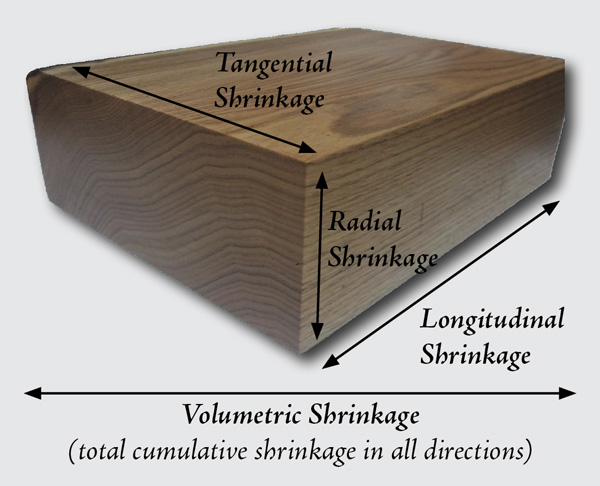
Credit: www.wood-database.com
Preventing Excessive Shrinkage
Store cedar in a dry, cool place. Avoid direct sunlight. Sunlight can cause uneven drying. Keep cedar off the ground. Use a raised platform. Airflow is important. Ensure good ventilation around the wood. Cover the wood with a breathable tarp. Plastic covers can trap moisture. Moisture increases shrinkage. Check the wood regularly. Look for signs of mold or dampness.
Dry cedar slowly. Fast drying can cause cracks. Ideal drying temperature is 60-70°F. Relative humidity should be 50-60%. Use a dehumidifier in humid areas. Avoid extreme temperatures. Cold slows drying. Heat speeds it up too much. Place wood in a well-ventilated area. Use fans to improve airflow. Stack the wood loosely. Space between boards allows air circulation. Rotate the wood periodically. This ensures even drying.
Impact On Woodworking
Cedar shrinks as it dries. This can cause problems in woodworking. The wood can warp or split. Joinery becomes a challenge. Pieces may not fit together. Gaps can form.
Joinery needs tight fits. Cedar shrinks and changes shape. This can affect the fit. Mortise and tenon joints may loosen. Dovetails can gap. Glue may not hold well.
Finishing cedar helps control shrinkage. Use a sealant. It keeps moisture in the wood. Oil finishes work well. They penetrate the wood. Polyurethane forms a hard layer. It protects the surface. Stains add color and protection. Apply finish evenly. Let it dry completely.
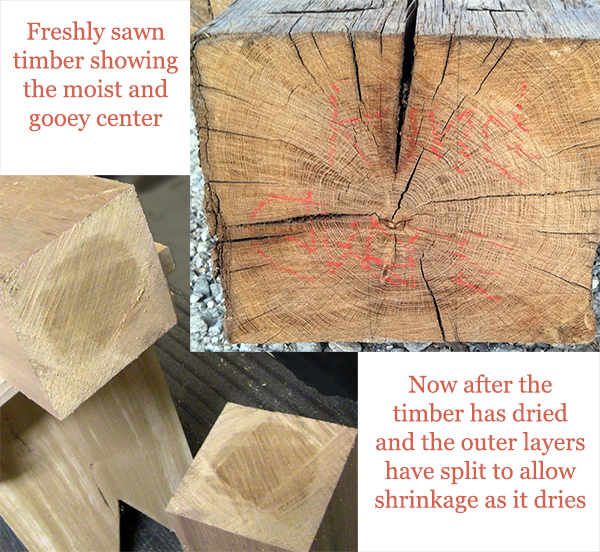
Credit: www.mcilvain.com
Maintenance Of Cedar Wood
Cedar wood needs regular inspections. Check for cracks or splits. These can grow over time. Look for any signs of decay. Inspect the color of the wood. Fading color might mean damage. Regular checks help keep the wood in good shape.
Apply protective treatments to cedar wood. This helps prevent damage. Use sealants or stains. These products protect the wood from moisture. They also reduce the risk of rot. Treatments should be reapplied every few years. This keeps the wood strong and durable.
Frequently Asked Questions
Does Cedar Shrink A Lot When Drying?
Cedar does shrink when it dries, but the shrinkage is minimal. It is known for its stability. This makes it a preferred wood for various projects.
How Much Does Cedar Wood Shrink?
Cedar wood shrinkage is relatively low, typically around 2-4%. This minimal shrinkage helps maintain its shape and structural integrity.
What Causes Cedar Wood To Shrink?
Cedar wood shrinks due to the loss of moisture content during the drying process. The reduction in water content leads to slight dimensional changes.
Can You Prevent Cedar From Shrinking?
You cannot completely prevent cedar from shrinking, but proper drying and sealing can minimize it. Using kiln-dried cedar and applying a finish helps reduce shrinkage.
Conclusion
Cedar does shrink as it dries. This is important for woodworking projects. Proper drying prevents warping and cracks. Always measure cedar moisture before use. This ensures better results and durability. Understanding cedar’s drying process helps in planning. Choose well-dried cedar for your projects.
It saves time and effort. Happy woodworking with cedar!

